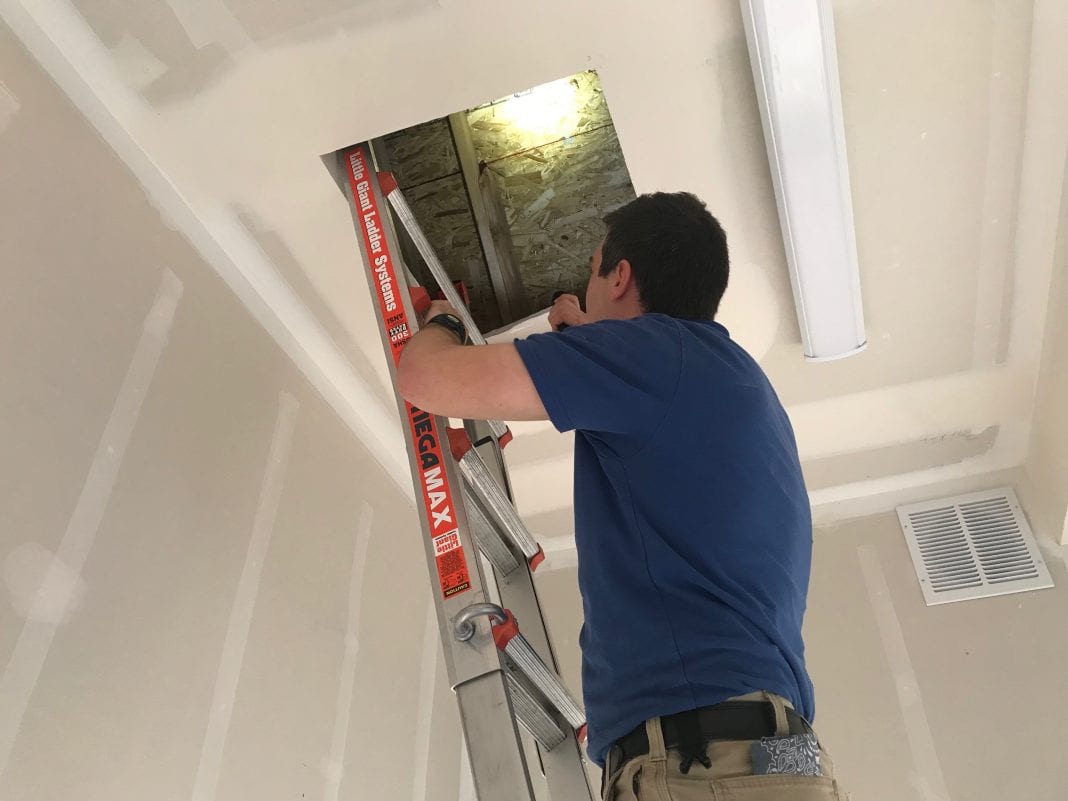Over the years Boggs Inspection Services has inspected lots of homes in the Puget Sound region. “A common question we receive is how best to upgrade a home’s efficiency,” says Dwayne Boggs. “A more efficient home will save energy, save you money, and be a more comfortable place for you and your family to live,” he adds. There are a lot of great ways to get started, and every little bit helps. Take a look at these ways to make your home more energy-efficient.
Seal Leaks
According to the U.S. Department of Energy, “Of the $2,000 the average American spends paying for energy annually, $200 to $400 could be going to waste from drafts, air leaks around openings, and outdated heating and cooling systems.” That’s $4,000 over a decade. Caulking around windows and doors and adding weather stripping are low-cost ways to improve the efficiency of your home. And remember to inspect seasonally and replace any worn weather-stripping and caulk to keep your home ship-shape.

Install a Programmable Thermostat
Installing a programmable thermostat—or using the one you already have—can save energy and money, but only if you use it correctly. Most programmable thermostats have settings for “home,” “away,” and “sleep.” For good energy savings in the winter, set your thermostat to 68 degrees when you are home and drop it as much as 10 degrees for when you are asleep and away. Programming your thermostat to raise the temperature back to the “home” level about an hour before you wake up or return for the day will give your heating system time to return to a comfortable temperature.
Tune-up or Upgrade Heating and Cooling Systems
How old is your furnace? The Department of Energy recommends replacing heating and cooling systems every 10 to 15 years with a newer, more energy-efficient system. However, if it’s not yet time to replace your system, or it’s not in the budget, an annual inspection and servicing will keep them in tip-top shape and running at peak efficiency for their model.

Upgrade or Add Insulation
“If your home is older, odds are it can benefit from an insulation upgrade,” says Dwayne. A home energy assessment can help you determine the R-value of your insulation and identify places where insulation should be added or upgraded. Even newer homes can sometimes benefit from added insulation. Some work, like improving attic insulation can be done yourself, but other upgrades can be more complicated and should be completed by a licensed and bonded professional.
Install New Windows, Doors and Skylights
Many factors go into replacing windows. “Switching from single pane to dual pane windows will have a huge impact on home heating and cooling costs,” says Dwayne. There are many other considerations like frame type, glazing, gas fill and more, but choosing Energy Star labeled products and reviewing ratings on the energy performance label from the National Fenestration Rating Council (NFRC) is a good place to start. New doors can have similar considerations.
A lower-cost alternative to new windows is the addition of storm windows and doors. Storm window installation can be done for about one quarter the price of window replacement and in many cases can be as efficient as replacement. Look for Low-e storm windows that reflect heat inside during the winter and reflect heat outside in the summer, keeping your home more comfortable all year long. Even if you don’t invest in new windows, doors or skylights, make sure that the ones you have are properly sealed.

Install an Energy-Efficient Water Heater
Water heaters are the second-highest source of energy use in your home. Replacing your water heater with a more energy-efficient model can keep your money from going down the drain. Look for the Energy Star label and consider a properly sized water heater for your family’s needs.
Upgrade Appliances and Electronics
Refrigerators, dishwashers, washing machines and televisions all use electricity. When it’s time to upgrade, look for the Energy Star label to get the most efficient appliance or electronic for your needs. Efficient dishwashers and washing machines will provide you savings in both electricity and water. Puget Sound Energy (PSE) customers can qualify for free pickup and recycling if you need to get rid of a refrigerator or freezer manufactured before 1992, and you may even receive a rebate check for $25. Check out the PSE website for more information.
Upgrade Lighting
Switching to energy-efficient lighting is one of the easiest ways to make your home more efficient. It’s as simple as screwing in a light bulb. Compact fluorescent lamps (CFLs), and light-emitting diodes (LEDs) are better alternatives than traditional incandescent bulbs because they use less energy and last longer. If you’ve already started the switch, do a hunt around your house for incandescent light bulbs you may have missed like in storage spaces, attics, basements or the garage.
PSE offers a free home energy assessment to its customers to help you find ways to improve energy efficiency in your home. The assessor can also provide some energy-efficient lighting, and water-conserving showerheads and faucet aerators free of charge. Also, check the PSE rebate page to see if any of your home efficiency improvements qualify for a rebate.
Before you know it, the small investments in home efficiency will pay off in lower heating and cooling bills, a more comfortable home, and an increase in your home’s value. If you get started on this list, over time you will find that your home sweet home, is an efficient home too.
Sponsored


































